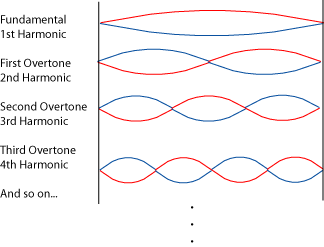Membrane (Drum) Vibration
Membranophones comprise diverse percussion instruments producing sound through vibrating membranes.
Drum types include the bass drum, snare drum, and conga drums. Widely used across cultures, they offer rhythmic foundations in music. The varying materials and techniques of striking or rubbing the membrane create a broad spectrum of tones.
The rhythmic heartbeat of a drum, pulsating through the air with primal energy, originates from the dynamic interplay of forces that bring a drum skin to life. Understanding the intricate dance of vibrations on the drumhead unveils the essence of percussive sound, a fusion of physics and artistry that echoes through the ages.
At the core of this percussive symphony is the drumhead, typically made of materials like animal skin, synthetic film, or a combination of both. When a drummer strikes the drum surface, they initiate a chain reaction that transforms mechanical energy into audible waves.
The process begins with the impact of a drumstick or hand on the drumhead, causing a localized deformation or displacement. This initial disturbance sets the drumhead into motion, creating a ripple effect that radiates across its surface. The drumhead, tensioned tightly over the drum shell, responds to this displacement by oscillating.
The vibrations on the drumhead manifest as standing waves, with regions of maximum and minimum displacement forming distinct patterns. These standing waves result from the superposition of incident and reflected waves traveling across the drumhead’s surface. The frequency of these waves, determined by factors such as tension, thickness, and diameter of the drumhead, governs the pitch of the produced sound.
The tension in the drumhead plays a pivotal role in shaping the drum’s voice. Higher tension produces a higher-pitched sound, while lower tension yields a deeper, resonant tone. Drummers often adjust the tension using tuning lugs or similar mechanisms to achieve the desired pitch for each drum in their kit.
The material composition of the drumhead also influences its vibrational characteristics. Traditional drumheads crafted from animal skins, such as those made from calfskin or goatskin, offer a warm, organic tone. In contrast, modern synthetic drumheads, typically made from Mylar or other polymer films, provide durability, consistency, and a brighter sound.
As the drumhead vibrates, it interacts with the air molecules surrounding it, creating compressions and rarefactions that propagate as sound waves. These waves travel through the air until they reach our ears, where they are perceived as the distinct sounds of the drum. The size and shape of the drum shell further shape the sound by influencing the resonance and amplification of the drumhead’s vibrations.
The impact location on the drumhead also contributes to the complexity of the sound. Striking near the center produces a focused, fundamental pitch, while striking near the edges emphasizes higher overtones. Drummers utilize these nuances, along with various playing techniques, to articulate a diverse range of tones and textures.
The decay of the drum sound, or how quickly the vibrations subside after being initiated, is influenced by factors like damping materials, room acoustics, and the type of drumhead used. Drummers often employ muffling devices or techniques to control sustain and achieve a desired level of resonance.
In conclusion, the mesmerizing dance of vibrations on a drumhead encapsulates the soul of percussion. From the primal beats echoing through ancient rituals to the intricate rhythms of contemporary music, the drumhead’s vibrational journey, guided by the principles of physics and the touch of a drummer’s hands, continues to shape the heartbeat of musical expression.

